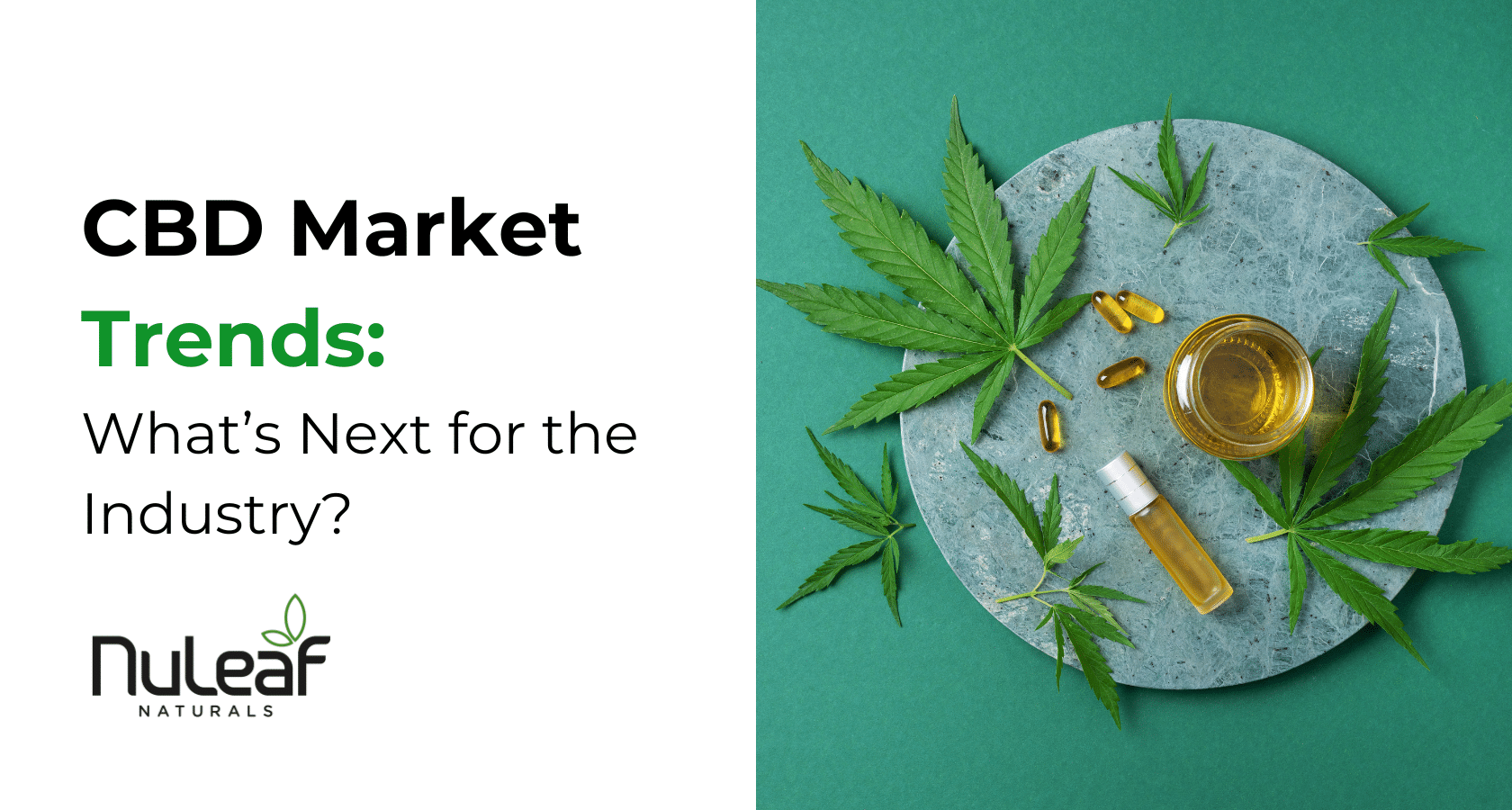CBD Market Trends: What’s Next for the Industry?

The CBD industry continues to evolve as consumer preferences shift, new product innovations emerge, and regulations change. Brands are adapting to make sure compliance with industry standards and consumer expectations.
As we look ahead, this article explores the latest trends shaping the CBD market, including new product developments, shifts in consumer behavior, and anticipated growth patterns.
1. The Rise of New CBD Products
CBD products have expanded beyond traditional oils and tinctures. As the market matures, companies are introducing innovative formats to meet evolving consumer preferences.
a) Nano CBD for Improved Absorption
Nanoemulsion technology is gaining popularity due to its potential for improved bioavailability. These formulations are being integrated into beverages, skincare, and dietary supplements.
b) CBD-Infused Beverages
CBD-infused drinks are becoming more popular, with brands incorporating ingredients like adaptogens and botanicals. These beverages cater to consumers looking for alternatives to traditional supplements.
c) CBD Skin Care and Personal Care Products
CBD has found its way into beauty and skincare, with creams, serums, and balms featuring a variety of ingredients. Many of these products now include additional ingredients such as essential oils and botanical extracts.
d) THC-Free and Broad-Spectrum CBD Options
As workplace regulations and compliance concerns remain, many brands are offering broad-spectrum and THC-free CBD products.
2. Consumer Trends in the CBD Market
With increased access to information, consumers are making more informed choices about CBD products. Here are some of the most notable behavioral trends:
a) Demand for Transparency and Lab Testing
Consumers expect transparency regarding the ingredients and sourcing of their CBD products. Many brands now provide third-party lab testing and certificates of analysis (COAs) for transparency.
b) Interest in Minor Cannabinoids
Beyond CBD, cannabinoids like CBG (cannabigerol) and CBN (cannabinol) are becoming more common in various formulations.
c) Growth in CBD for Pets
Pet owners are exploring CBD products for their animals, with a focus on supporting everyday wellness*. The pet CBD market is projected to grow significantly, with tinctures, chews, and other pet-friendly formats becoming widely available.
d) Preference for Sustainable and Organic CBD
Sustainability is a key consideration for many consumers. Brands that use organic farming practices, eco-friendly packaging, and responsible sourcing are gaining traction in the market.
3. CBD Market Growth Projections
Despite regulatory uncertainties, the CBD industry is expected to continue its upward trajectory.
a) Global Market Expansion
The global CBD market is forecasted to reach $47.22 billion by 2028, growing at a CAGR of 21.3% from 2023-2028. While the U.S. leads the market, demand is increasing in Europe and parts of Asia as regulations change.
b) Growth of CBD in Retail and E-Commerce
As mainstream retailers introduce CBD products, consumer access is improving. Online sales are also expanding, with personalized recommendations and subscription models helping to drive growth.
c) Increased Investment and Innovation
With growing consumer interest, investment in CBD research and product development is increasing. This is expected to lead to further diversification of product offerings in the coming years.
4. Regulatory Considerations in the CBD Industry
The regulatory landscape for CBD is constantly evolving. Here’s what to expect moving forward:
a) FDA Oversight on CBD Products
The FDA has not approved CBD for medical use or as a dietary supplement. Future regulatory decisions may impact labeling, marketing, and product formulations.
b) International Regulatory Developments
As more countries establish CBD regulations, international markets are becoming more accessible. However, businesses must stay informed about legal requirements in different regions.
c) Evolving State and Federal Policies
CBD regulations vary by state, particularly regarding THC limits and labeling requirements. Companies must make sure compliance with both state and federal laws.
5. What’s Next for the CBD Industry?
As the market continues to expand, several trends are expected to shape the industry’s future:
a) Personalized CBD Experiences
AI-driven recommendations and customized formulations are expected to gain popularity, offering consumers more personalized choices.* However, it’s vital for individuals to consult with their doctor or healthcare professional before making any decisions about using supplements, as AI tools cannot provide medical advice.
b) Growth of CBD-Infused Foods
CBD edibles, such as gummies and snacks, are expected to expand as regulatory clarity improves. These products offer a convenient way for consumers to incorporate CBD into their daily routine*.
c) Advancements in Consumer Education
With more research emerging, brands are investing in educational initiatives to help consumers make informed decisions about CBD usage. However, it remains essential for individuals to consult their healthcare provider before incorporating CBD into their wellness routine.*
Final Thoughts
The CBD industry continues to grow, with new innovations and consumer preferences shaping its future. As the market expands, companies must focus on transparency, compliance, and education to support consumer trust*.
FDA Disclaimer:
*This statement has not been reviewed by the Food and Drug Administration. CBD product is not intended to diagnose, treat, cure, or prevent any disease. Consumers should consult with their healthcare provider before using CBD products, especially if they have existing medical conditions or take prescription medications.










